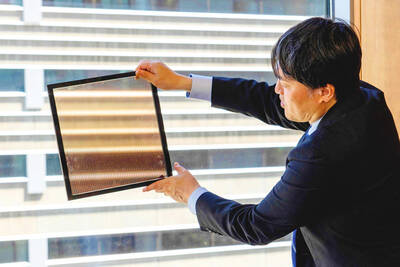Toyota Motor Co plans today to try to undercut suggestions that its electronics systems caused the sudden acceleration problems that led to the recall of more than 8 million vehicles.
The automaker plans an event in which it will seek to debunk a critic who claims faulty gas pedals did not cause the sudden acceleration.
Toyota will aim to duplicate the scenario created by David Gilbert, a professor at Southern Illinois University Carbondale.
Gilbert told Congress on Feb. 23 that he was able to recreate sudden acceleration in a Toyota vehicle by manipulating its electronics.
The company is calling in the director of Stanford University’s Center for Automotive Research to try to refute the claims. Toyota said Stanford professor Chris Gerdes would show that the malfunctions Gilbert produced “are completely unrealistic under real-world conditions and can easily be reproduced on a wide range of vehicles made by other manufacturers.”
Stanford’s Center for Automotive Research is funded by a group of auto companies, including Toyota.
Meanwhile, the president of Mitsubishi Motors did not rule out a future capital tie-up with France’s Peugeot, reports said yesterday.
The two companies announced last week that they had scrapped talks on an ambitious capital tie-up that would have created the world’s sixth-largest auto alliance, after reports of financial discord.
The announcement came after PSA Peugeot chief Philippe Varin and Mitsubishi Motors president Osamu Masuko met at the Geneva Motor Show.
On his return, however, the president of the Japanese maker hinted they may try again, the Nikkei Shimbun and other media said.
“We will not exclude any possibility in the future” if the two firms keep expanding their current alliance, Masuko reportedly said at Narita airport on Saturday when asked about a capital alliance.

UNCERTAINTIES: Exports surged 34.1% and private investment grew 7.03% to outpace expectations in the first half, although US tariffs could stall momentum The Chung-Hua Institution for Economic Research (CIER, 中華經濟研究院) yesterday raised its GDP growth forecast to 3.05 percent this year on a robust first-half performance, but warned that US tariff threats and external uncertainty could stall momentum in the second half of the year. “The first half proved exceptionally strong, allowing room for optimism,” CIER president Lien Hsien-ming (連賢明) said. “But the growth momentum may slow moving forward due to US tariffs.” The tariff threat poses definite downside risks, although the scale of the impact remains unclear given the unpredictability of US President Donald Trump’s policies, Lien said. Despite the headwinds, Taiwan is likely

When Lika Megreladze was a child, life in her native western Georgian region of Guria revolved around tea. Her mother worked for decades as a scientist at the Soviet Union’s Institute of Tea and Subtropical Crops in the village of Anaseuli, Georgia, perfecting cultivation methods for a Georgian tea industry that supplied the bulk of the vast communist state’s brews. “When I was a child, this was only my mum’s workplace. Only later I realized that it was something big,” she said. Now, the institute lies abandoned. Yellowed papers are strewn around its decaying corridors, and a statue of Soviet founder Vladimir Lenin

UNIFYING OPPOSITION: Numerous companies have registered complaints over the potential levies, bringing together rival automakers in voicing their reservations US President Donald Trump is readying plans for industry-specific tariffs to kick in alongside his country-by-country duties in two weeks, ramping up his push to reshape the US’ standing in the global trading system by penalizing purchases from abroad. Administration officials could release details of Trump’s planned 50 percent duty on copper in the days before they are set to take effect on Friday next week, a person familiar with the matter said. That is the same date Trump’s “reciprocal” levies on products from more than 100 nations are slated to begin. Trump on Tuesday said that he is likely to impose tariffs

Japan is heavily investing in a new kind of ultra-thin, flexible solar panel that it hopes will help it meet renewable energy goals while challenging China’s dominance of the sector. Pliable perovskite panels are perfect for mountainous Japan, with its shortage of flat plots for traditional solar farms. A key component of the panels is iodine, something Japan produces more of than any country but Chile. The push faces some obstacles: Perovskite panels contain toxic lead, and, for now, produce less power and have shorter lifespans than their silicon counterparts. Still, with a goal of net zero by 2050 and a desire to